Crumbly, small, misshapen fruit can have several causes, including
- Tarnished Plant Bug feeding
- Raspberry Bushy Dwarf Virus
- Tomato Ringspot Virus
- Poor Pollination
- Heat Stress
- Frost Damage
Tarnished Plant Bugs (Lygus lineolaris) feed on flowers and developing fruit and are a common cause for crumbly, misshapen fruit
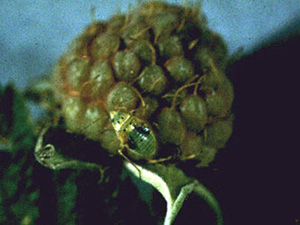
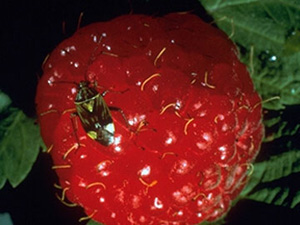
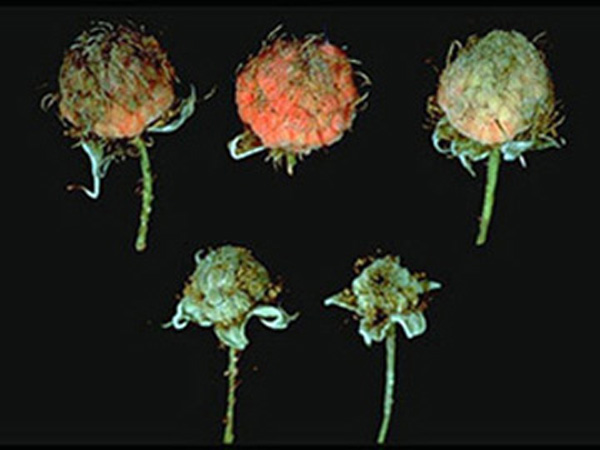
More tarnished plant bug information
Raspberry Bushy Dwarf Virus also causes crumbly berries. A lab test is required to determine if this virus is present in a planting. Once infected, a planting will always be infected. More raspberry virus information
Tomato ringspot virus is common in older red raspberry plantings and also causes fruit to crumble when harvested.

More raspberry virus information
Poor pollination and very low humidity during pollination can cause crumbly fruit. Symptoms generally do not recur the following year. More raspberry pollination information
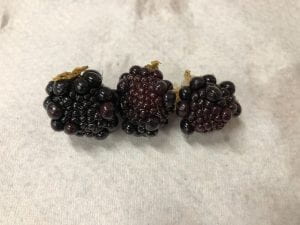
Heat stress can be a cause of deformed fruit in many crops.
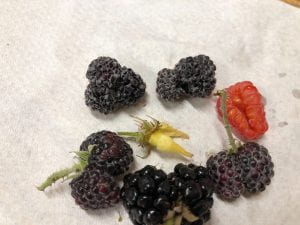
Frost damage is another cause of deformed fruit and reduced yields. Flowers damaged by frost will develop poorly, or not at all.



